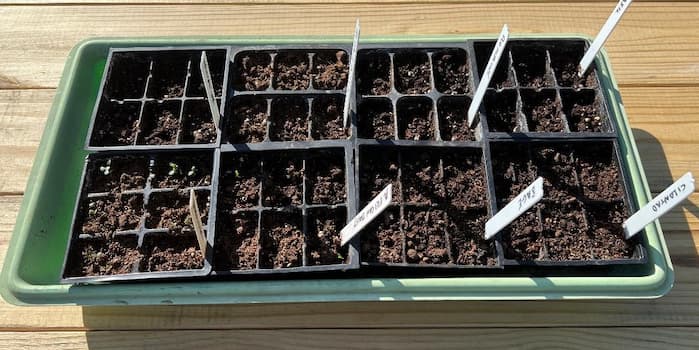Seed Plant Propagation

Starting Plants from Seeds
Plant propagation from seeds is by far the most common, and most well-known way of creating new plants. The vast majority of plants in the world produce seeds. So, propagating plants from seeds is naturally the most common and popular method to grow new plants.
We seldom think about how seeds came to be, and the wonder of their creation. Seeds are the result of pollen from a male (donor) flower, reaching and successfully entering (pollinating) the stamen of a female flower. Sometimes the donor is the same plant. Sometimes, it is another plant nearby. The resulting seed carries some of the genetic traits of both parents. The seed from the two parents, therefore, produces a plant similar, but not identical to either parent.
Each year untold billions and trillions of seeds are produced in the fruit of a plant, or the flower pod. In nature, the seeds dry out in autumn and then spend the winter in or on the ground.
How Nature Spreads Seeds
Mother nature knows all about starting plants from seeds. They awaken and sprout in the spring as young seedlings. Seeds are cast about by nature in a variety of ways. Some seeds fall to the ground, and new offspring sprout up right near the location of the mother plant. Other seeds are cast far distances by floating through the air. Good examples of these are dandelions and poplar trees. Other plants use animals to help spread their seeds in a wide area. Berries, for example, pass through the digestive system of birds and are deposited long distances away. Other seeds are contained in burrs that attach themselves to an animal’s fur. The burrs can be carried for miles, before being cast off by their unsuspecting transportation.
The number of seeds produced is usually proportional to the seed’s survival rate. That’s why some plants produce thousands of seeds, as only a few ultimately find a suitable place to germinate.
Collecting and Acquiring Garden Seeds
For your garden, seeds are generally easy to collect and store away for next year. In today’s world of mass production, only a few varieties of a species are readily available in seed stores, online, and in catalogs. Buying Heirloom seeds, and keeping your seeds, are great ways of retaining less common varieties that may carry unique features or qualities. Those unique qualities will make your garden stand out to both the casual observer and the garden experts.
With all those countless types of seeds and plants in nature, it is no wonder that each seed has a preferred way of germination and planting. When propagating plants from seeds, gardeners learn and apply the proper techniques for each specific plant. Factors affecting seed germination include moisture levels, soil temperature, seed planting depth, and amount of light.
Related Articles
Please support our site. Shop for:
- rmmatthews100@hotmail.com
- 585-721-6528
- Rochester, NY
©1999-2024 GardenersNet.Com, All Rights Reserved

